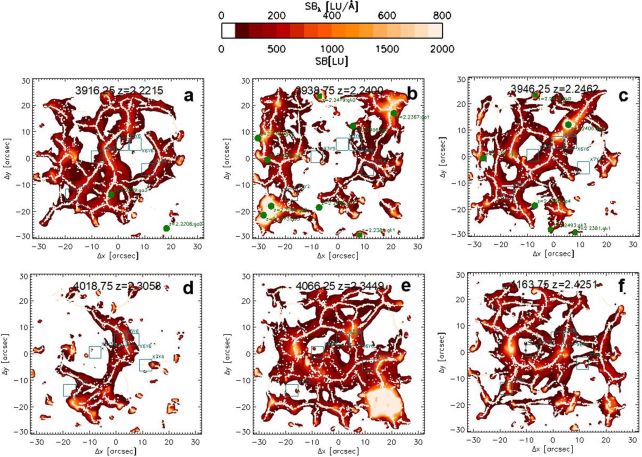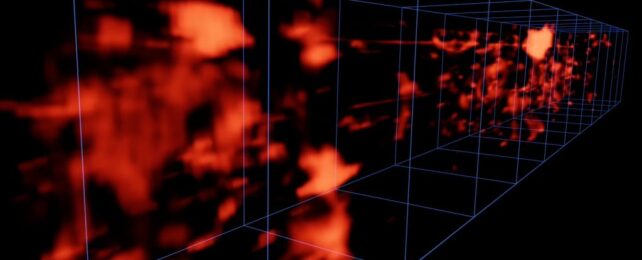The vast, mostly invisible network of filaments that spans and connects the Universe has finally been spotted gleaming in the darkness.
In the inky reaches of intergalactic space, astronomers have directly detected the faint glow of these filaments as they stretch across the abyss. Previously, our only detections of this vast network had been seen around objects such as quasars, the brightest lights in the Universe.
Now, we have seen it in the dark, where the majority of the web lurks.
"Before this latest finding, we saw the filamentary structures under the equivalent of a lamppost," says astrophysicist Christopher Martin of Caltech. "Now we can see them without a lamp."
Although there are vast distances that stretch between objects in the Universe, it's not, as first appearances might suggest, a series of isolated islands. Our models of the Universe suggest that there's a vast cosmic web of dark matter, the strands of which span those distances, connecting galaxy to galaxy, cluster to cluster.
Along these filaments, which coalesced under gravity in the early stages of the Universe, hydrogen from the sparse intergalactic medium collects and flows. It's thought that this hydrogen feeds into growing galaxies, providing them with fresh material for making sparkling stars.

In a Universe filled with bright things, the dim glow of cold diffuse hydrogen isn't exactly easy to spot. But finding it is an important goal in astronomy and cosmology.
It can give us information about how the Universe continues to evolve and grow, as well as where the Universe's invisible dark matter and missing normal matter might be lurking: an estimated 60 percent of the hydrogen formed in the Big Bang is thought to reside in the cosmic web.
"The cosmic web delineates the architecture of our universe," Martin says. "It's where most of the normal, or baryonic, matter in our galaxy resides and directly traces the location of dark matter."
So, to hunt down the parts of the cosmic web that are hardest to find, Martin and his colleagues designed a dedicated instrument to search for dim Lyman alpha emission – the spectral fingerprint of hydrogen as it absorbs and re-emits radiation. The Keck Cosmic Web Imager (KCWI) resides at the W. M. Keck Observatory on Maunakea in Hawaii.
The Universe is full of different kinds of light, including the glow of the Solar System and the glow of the galaxy. When you're observing from Earth, that light becomes even more complicated by atmospheric light. So Martin designed a way to subtract that light from KCWI observations.

"We look at two different patches of sky, A and B," he explains.
"The filament structures will be at distinct distances in the two directions in the patches, so you can take the background light from image B and subtract it from A, and vice versa, leaving just the structures. I ran detailed simulations of this in 2019 to convince myself that this method would work."
Then, the researchers studied patches of the sky, looking for concentrations of that tell-tale Lyman alpha line.
Because the Universe is expanding, the wavelength of light at greater distances becomes attenuated towards the red end of the spectrum; so, the redder the emission, the more distant the light. This allowed the team to compile a map of the emission in three dimensions – light that has traveled between 10 and 12 billion years to reach us.
That represents a time in the history of the Universe when everything was still in the early flurries of formation, following the Big Bang 13.8 billion years ago. The result is a first glimpse of the complex cosmic web in the darkest corners of the Universe. This, the researchers say, offers a new way to trace the cosmic web, tracking down the Universe's matter, and learning how all of everything came together.
"We are very excited," says astrophysicist and instrument scientist Mateusz Matuszewski of Caltech, "about what this new tool will help us learn about the more distant filaments and the era when the first stars and black holes formed."
The research has been published in Nature Astronomy.
